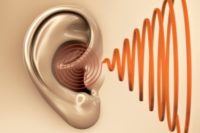 Noise pollution is a fact of life worldwide. Similar to second-hand smoke, second-hand noise is an unwanted airborne pollutant produced by others; imposed without consent, and often at times, places, and volumes with no controls, according to a report from the Republic of Zimbabwe, in southern Africa.
Noise pollution is a fact of life worldwide. Similar to second-hand smoke, second-hand noise is an unwanted airborne pollutant produced by others; imposed without consent, and often at times, places, and volumes with no controls, according to a report from the Republic of Zimbabwe, in southern Africa.
Evidence indicates noise pollution is not a mere annoyance, as with some forms of pollution, but has wide-ranging adverse health, social, and economic effects.
Noise pollution is thought to be more severe and widespread than ever, and will continue to increase due to population growth, urbanization, and the boom in powerful and highly mobile sources of noise.
Noise impairs health and degrades social, working and learning environments with economic and health losses, according to experts. It interferes with sleep, concentration, communication, and recreation.
The World Health Organization (WHO) stipulates that noise should not exceed 55 decibels during the day and should be less than 35dB at night in residential areas.
Experts agree noise at high volumes can contribute to a rise in blood pressure, stress, vasoconstriction and increased incidence of coronary artery disease.
In animals, noise can increase the risk of death by altering predator or prey detection and avoidance. It can also interfere in reproduction, navigation and contribute to permanent hearing loss.
Environmental noise also can cause adverse psychosocial and physiological effects to public health, according to WHO.
In his book, ”Noise: Biggest Polluter on the Planet,” John Stewart notes: “Even amongst many environmentalists, noise pollution is forgotten, downplayed, sometimes even dismissed.”
The book shows noise is threatening the planet’s natural sound systems in a manner similar to how climate change threatens global warming.
Source: NewsDay www.newsday.co.zw




